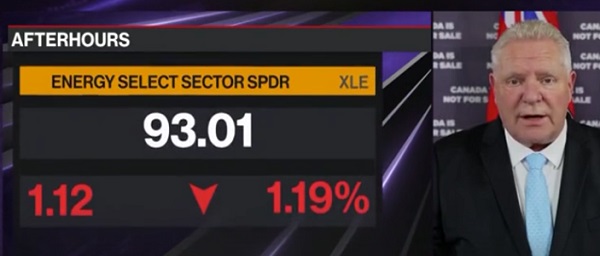National Entertainment
Elite 8: National Spelling Bee too easy for octet of champs

OXON HILL, Md. — There were warning signs throughout a marathon day of spelling that this Scripps National Spelling Bee would not conclude like any other in the event’s 94-year history.
Rishik Gandharsi sensed it as he stepped to the microphone for the ninth round of Thursday night’s prime-time finals, when he was one of eight spellers remaining onstage.
“Just out of curiosity,” Rishik asked pronouncer Jacques Bailly, “do you happen to know what time it is?”
It was 11:18 p.m. Forty-five minutes later, Rishik was a champion. So was Erin Howard. So were Saketh Sundar, Shruthika Padhy, Sohum Sukhantankar, Abhijay Kodali, Christopher Serrao and, finally, Rohan Raja. The eight co-champions closed out the bee by spelling 47 consecutive words correctly.
All eight received the full winner’s freight of $50,000 in cash and a new, custom-designed trophy, because Scripps simply could not come up with words difficult enough to challenge them.
There was plenty of concern after the bee ended in ties three years in a row, from 2014-2016, that the very best spellers might be too good for the bee. Scripps came up with a written tiebreaker test of both spelling and vocabulary, a solution no one was thrilled about. After two years in which the test wasn’t needed, bee officials decided it was too burdensome on the spellers and got rid of it.
The rules going into this year’s bee called for, at most, three co-champions. A contingency plan for even more winners was developed on the fly Thursday afternoon, after bee officials evaluated spellers’ performance in the early final rounds. It took 5
“We are closely connected to the difficulty level at the program, so we are quite aware of the rising level of competition. This does not actually surprise us at all,” said Paige Kimble, the bee’s executive director. “We didn’t go into the competition tonight not knowing that this was a possibility and not having a plan.”
Bailly, the longtime pronouncer and the beloved public face of the bee, broke the news to a stunned crowd in a convention
“Champion spellers, we are now in uncharted territory,” Bailly said. “We do have plenty of words remaining on our list. But we will soon run out of words that will possibly challenge you, the most phenomenal collection of super spellers in the history of this competition.”
There would be three rounds, Bailly said, and anyone who got through them would be a champion. No one came close to missing a word.
For the winners, fatigue was the only real concern. Shruthika staggered to the microphone for her last few words and greeted Bailly with a wan, hoarse voice.
“I’m very glad they stopped where they did,” said Shruthika, a 13-year-old from Cherry Hill, New Jersey.
“I feel like there was no better way to do it,” said Saketh, who’s also 13 and lives in Clarksville, Maryland. “I don’t know if I would’ve won if they kept going. I was super tired because it was like 12:00, and I was exhausted.”
Kimble has long insisted that Scripps would never subject spellers to an endurance contest, and she had no regrets about the way it ended.
“Look at these kids. They worked so hard and they achieved so much,” Kimble said. “I think it’s the best night ever for the bee.”
But there were murmurs of discontent among the ex-spellers and spelling experts in the crowd. The words, they said, were just too easy. Naysa Modi, last year’s runner-up who surprisingly missed out on the finals this year because of her written test score, was in tears as the confetti fell. She said the winners were deserving, but the final words weren’t tough enough for them, or her.
Among the words that earned spellers a share of the title: “auslaut,” ”palama,” ”cernuous” and “odylic.”
“This would never happen at my bee,” said Rahul Walia, founder of the South Asian Spelling Bee, where Sohum defeated Abhijay for the title last year. He said Scripps was just scratching the surface of words that could confuse or trip up elite competitors.
The South Asian bee and the North South Foundation bee, national competitions available to spellers only of South Asian descent, are among the many reasons Indian-Americans have come to dominate the Scripps bee over the past two decades.
Erin was the first champion without South Asian heritage since Evan O’Dorney in 2007.
“I never expected for this to happen. I was convinced that the bell was going to ring on me at some point today, but for some reason it did not,” said Erin, a 14-year-old from Huntsville, Alabama. “This is the culmination of the past six years of my life. So frankly, I just can’t believe that I’m here right now.”
The majority of the spellers had personal coaches, and 13 of the 16 used word lists and study materials compiled by ex-spellers Shobha Dasari and her younger brother, Shourav. Shobha, who’s 18 and will go to Stanford in the fall, said the proliferation of private coaches and online study guides has simplified speller preparation, but she still gave credit to the champions.
“The kids still have to put in the work,” Shobha said.
Three of the champions are from the Dallas area, perhaps the most competitive region in the country: Sohum, Abhijay and Rohan. New Jersey had two champs, in Christopher and Shruthika. Rishik, from San Jose, California, was the only one of the self-proclaimed “octo-champs” from the West Coast.
Perhaps the speller who had the oddest experience was Simone Kaplan, the last kid to misspell a word Thursday night. Simone, a 13-year-old from Davie, Florida, who dazzled the crowd by shouting out definitions and obscure roots, finished ninth, but she also turned out to be the runner-up.
Simone is in seventh grade, which means next year is her final year of eligibility. Champions are barred from defending their titles, so she wouldn’t have to face any of the kids who beat her. But she’s not sure if she’ll try again, because she was satisfied with her performance.
“I do feel that this is a strange occurrence,” Simone said in an attempt to sum up the night. “A tiebreaker test could have potentially come in handy.”
___
Follow Ben Nuckols at https://twitter.com/APBenNuckols
Ben Nuckols, The Associated Press
Alberta
Province adds $335 million over three years to attract more investment from Hollywood

Action! for Alberta’s film and television industry
Alberta’s screen-based sector has momentum, and Alberta’s government is helping to make the province a magnet for the job-creating film and television industry.
In 2020, Alberta’s government launched the Film and Television Tax Credit, causing the province’s film and television industry to grow in size and reputation. Since then, Alberta has attracted 129 productions with a total production value of $1.7 billion. This growth has resulted in approximately 9,000 direct and indirect jobs for Albertans.
To keep this momentum going, Alberta’s government continues to make changes to the program and increase investment in it. One year after the tax credit was launched, the cap was raised, resulting in a doubling of the province’s film and television sector. Now, Alberta’s government is increasing its investment to a total of $335 million over three years to continue attracting the attention and investment dollars of Hollywood.
“Alberta is experiencing exponential growth in our film and television sector, and we are well on our way to becoming a top Canadian jurisdiction for producers from around the world. Since the introduction of the Film and Television Tax Credit, the film and television sector in Alberta has doubled. Productions reach every part of Alberta – big cities, small towns and rural locations – and use local resources, businesses, accommodations and contractors, supporting thousands of jobs.”
As the province’s film and television industry grows, so does the quality and number of Alberta-made productions. To help grow and promote local talent and productions, Alberta’s government is also doubling the funding to the Alberta Made Screen Industries Program. This funding will support local producers and attract productions from around the world to set up shop in Alberta.
“Alberta-made film and television productions showcase Alberta’s unique culture, breathtaking landscapes and stories to audiences across the globe. We are increasing our support to smaller productions because they provide a unique Alberta-made training ground for emerging talent and create local, highly skilled workers in the sector.”
The Film and Television Tax Credit and Alberta Made Screen Industries Program work together to showcase the beauty and diversity of Alberta, create jobs, diversify the economy and support hospitality, service and tourism in the province. These targeted incentives to the film and television industries are helping to ensure Alberta remains the economic engine of Canada for years to come and the next film and television hub.
“The tax credit is central to the success of the industry. This is a competitive industry globally, and here in Alberta we’re fortunate we had the cap removed. Now we can see productions with budgets from $100,000 to well over $100 million. Now that we have a robust production environment, there are more opportunities for people to have well-paying creative jobs.”
“The Alberta government has provided supports for the film and television industry that provide certainty. It gives us more flexibility in how we’re moving forward in our film and television work and the way that we’re running our businesses.”
“Seeing the increase to the Alberta Made Production Grant in the last budget has been fantastic. It will help grow the local industry, which means so much to local performers because that’s where they build their resumés. It allows them to be a working performer, and not take side jobs or a day job somewhere else, and really focus on their craft.”
Quick facts
- According to Statistics Canada data:
- Every $1 million of production activity in the screen-based production sector creates about 13 Alberta jobs.
- Every $1 million of government investment under the Film and Television Tax Credit program is expected to support about 85 Alberta jobs.
- The film and television industry is experiencing significant growth nationally and globally.
- Every year, Alberta graduates more than 3,000 creative industry professionals from its post-secondary institutions.
- The production workforce has grown 71 per cent from 2017, or by about 4,000 workers across all positions.
- Alberta’s Film and Television Tax Credit supports medium- and large-scale productions with costs over $499,999 through a refundable tax credit on eligible Alberta production and labour costs to corporations that produce films, television series and other eligible screen-based productions.
- The Alberta Made Production Grant supports productions with a budget of up to $499,999.
- The Alberta Made Screen Industries Program, through the Alberta Made Production Grant, supports smaller productions that do not qualify for the tax credit, covering 25 per cent of eligible Alberta production costs to a maximum of $125,000.
- Every $1 investment in the Alberta Made Production Grant program generates an additional $4 in economic return.
Alberta
Edmonton to host “Road to the JUNOS Concert Series” leading up to Juno Awards week

From Explore Edmonton
Road to The JUNOS Concert Series Builds Excitement to JUNO Week.
Access and Diversity Key for Fans and Artists.
The JUNOS 2023 Host Committee is excited to announce an Edmonton-based concert series, titled Road to The JUNOS, as a lead-up to The 52nd Annual JUNO Awards Broadcast and JUNO Week from March 9-13.
The concert series will be set in small, intimate venues around Edmonton and feature local and regional artists who one day may end up on the JUNOS stage. Road to The JUNOS is a collaboration between the JUNOS 2023 Edmonton Host Committee, CBC Music and Explore Edmonton. It aims to provide excitement and create momentum leading into Canada’s biggest celebration of music.
The 10-show concert series will run from Monday, February 6 through Tuesday, February 28 at local venues in Edmonton. Of note, the artists playing these events come from a wide variety of backgrounds and genres and offer an opportunity to see some of Canada’s newest and most exciting talent. Fans can be a part of an intimate JUNOS concert with an affordable advance ticket price of only $10.

Road to The JUNOS is possible thanks in part to federal funding through PrairiesCan’s Tourism Relief Fund. This Fund is positioning Canada as a destination of choice for domestic and international travel. PrairiesCan administers the Fund in Alberta.
“Edmonton is a vibrant and dynamic cultural hub and our government’s support for Road to The JUNOS will bring that experience to visitors from across Canada and around the globe. Through the Tourism Relief Fund and our partnership with organizations such as Explore Edmonton, communities across Canada will capitalize on the jobs and economic activity generated through Edmonton’s growing tourism industry.”
– The Honourable Dan Vandal, Minister for PrairiesCan
“Road to The JUNOS is an important step in positioning Edmonton as an all-season destination and celebrating our community’s business and arts districts. I’m proud to see our government supporting Edmonton to build on its leadership in arts and culture while strengthening local tourism activity that benefits businesses in our city.”
– The Honourable Randy Boissonnault, Minister of Tourism and Associate Minister of Finance
“Road to The JUNOS is an exciting opportunity to grow Alberta’s music industry, showcasing local talent to visitors from all parts of Canada. The Alberta government is proud to support this series of concerts that features Alberta’s talent on stage as well as the venues, promoters and other music professionals.”
– The Honourable Jason Luan, Alberta Minister of Culture
“Canada has a long history of producing exceptionally talented musicians. The Road to The JUNOS concert series hopes to help give a platform to some of our up-and-coming artists and audiences a chance to say ‘we saw them when’.”
– Aimée Hill, co-chair, 2023 Host Committee
“Explore Edmonton is proud to support The JUNO Awards in March and we are delighted to be a part of this grassroots concert series. Promoting our local music venues, supporting talented Canadian musicians, and giving Edmontonians quality music experiences at an affordable price is such an important piece to the whole JUNOS experience. And we get to show off a little for the rest of Canada!”
– Traci Bednard, CEO of Explore Edmonton
The JUNOS Experience starts here. For more information and to buy tickets, visit: https://edmonton.junoawards.
-

 2025 Federal Election2 days ago
2025 Federal Election2 days agoMORE OF THE SAME: Mark Carney Admits He Will Not Repeal the Liberal’s Bill C-69 – The ‘No Pipelines’ Bill
-

 2025 Federal Election2 days ago
2025 Federal Election2 days ago‘Coordinated and Alarming’: Allegations of Chinese Voter Suppression in 2021 Race That Flipped Toronto Riding to Liberals and Paul Chiang
-

 2025 Federal Election1 day ago
2025 Federal Election1 day ago‘I’m Cautiously Optimistic’: Doug Ford Strongly Recommends Canada ‘Not To Retaliate’ Against Trump’s Tariffs
-

 Business1 day ago
Business1 day agoCalifornia planning to double film tax credits amid industry decline
-

 Alberta2 days ago
Alberta2 days agoEnergy sector will fuel Alberta economy and Canada’s exports for many years to come
-

 Business1 day ago
Business1 day agoCanada may escape the worst as Trump declares America’s economic independence with Liberation Day tariffs
-

 Alberta1 day ago
Alberta1 day agoBig win for Alberta and Canada: Statement from Premier Smith
-

 2025 Federal Election2 days ago
2025 Federal Election2 days agoDon’t let the Liberals fool you on electric cars





